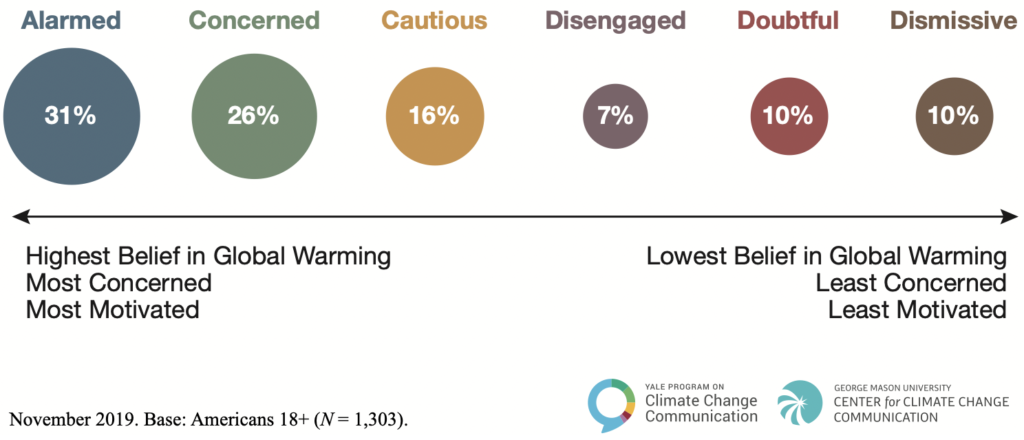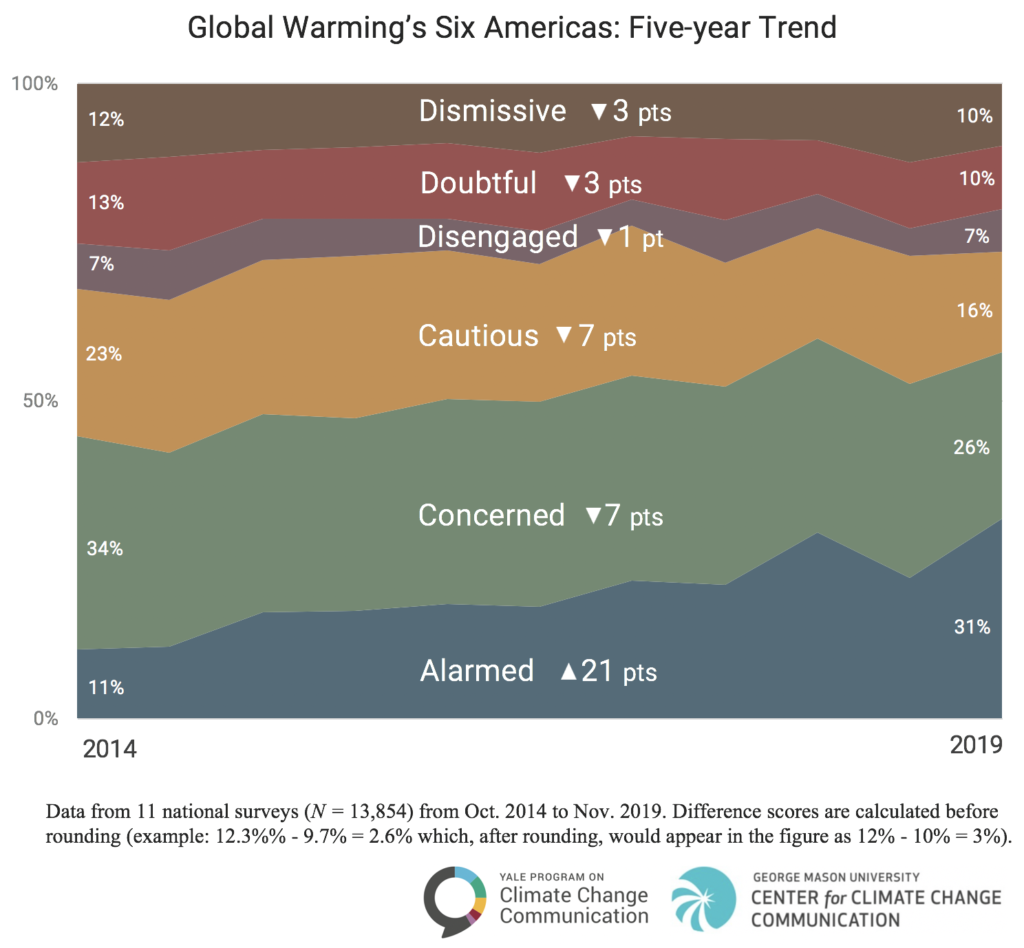Climate Note · Jan 16, 2020
For the first time, the Alarmed are now the largest of Global Warming’s Six Americas
By Matthew Goldberg, Abel Gustafson, Seth Rosenthal, John Kotcher, Edward Maibach and Anthony Leiserowitz
Filed under: Audiences

Nearly six in ten (58%) Americans are now either “Alarmed” or “Concerned” about global warming. From 2014 to 2019, the proportion of “Alarmed” nearly tripled.
Our prior research has categorized Americans into six groups – Global Warming’s Six Americas – based on their climate change beliefs, attitudes, and behaviors. The “Alarmed” are the most worried about global warming and the most supportive of strong action to reduce carbon pollution. In contrast, the “Dismissive” do not think global warming is happening or human-caused and strongly oppose climate action. [A short “Six Americas” quiz is publicly available online.]
Our latest survey (November 2019) finds that the Alarmed segment is at an all-time high (31%). The Alarmed segment has nearly tripled in size since October 2014. Conversely, the Dismissive (10%) and Doubtful (10%) segments have each decreased over the past five years. The proportion of Americans in these two segments combined has decreased by about five percentage points since 2014.
Over the past five years, the U.S. population as a whole has shifted dramatically towards membership in the Alarmed segment. In 2014, the Alarmed and Dismissive were similar in size. As of November 2019, however, the Alarmed now outnumber the Dismissive by more than 3 to 1 (31% vs. 10%), representing a major shift in these two “issue publics” most engaged with the issue of climate change.
Methods
These data were produced from 11 bi-annual waves (N = 13,854) of the Climate Change in the American Mind survey, a nationally-representative survey of public opinion on climate change in the United States conducted by the Yale Program on Climate Change Communication and the George Mason University Center for Climate Change Communication. Surveys were conducted from October 2014 to November 2019 using the Ipsos KnowledgePanel® (formerly GfK), a representative online panel of U.S. adults (18+). All questionnaires were self-administered by respondents in a web-based environment.
Average margin of error for each wave: +/- 3 percentage points at the 95% confidence level. Percentage values are weighted to align with U.S. Census parameters. For tabulation purposes, percentage points are rounded to the nearest whole number. Additionally, summed categories (e.g., Alarmed + Concerned) are rounded after sums are calculated (e.g., 31.4% + 26.2% = 57.6%, which, after rounding would appear in this report as 31% + 26% = 58%).

